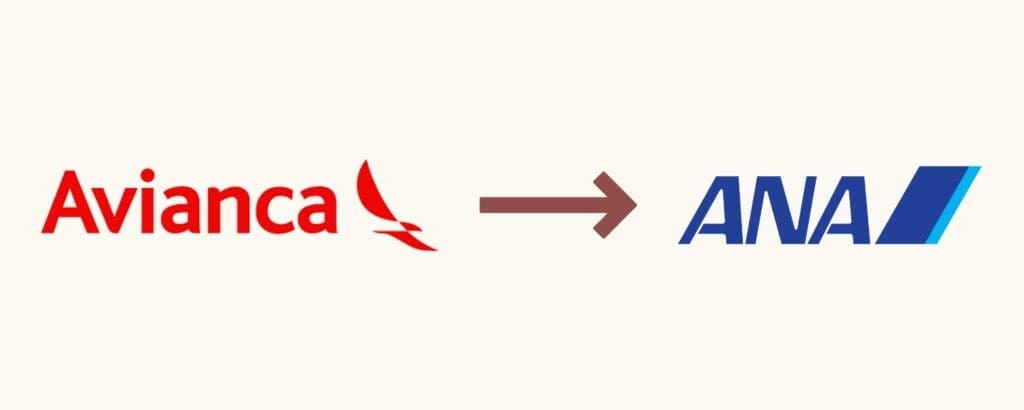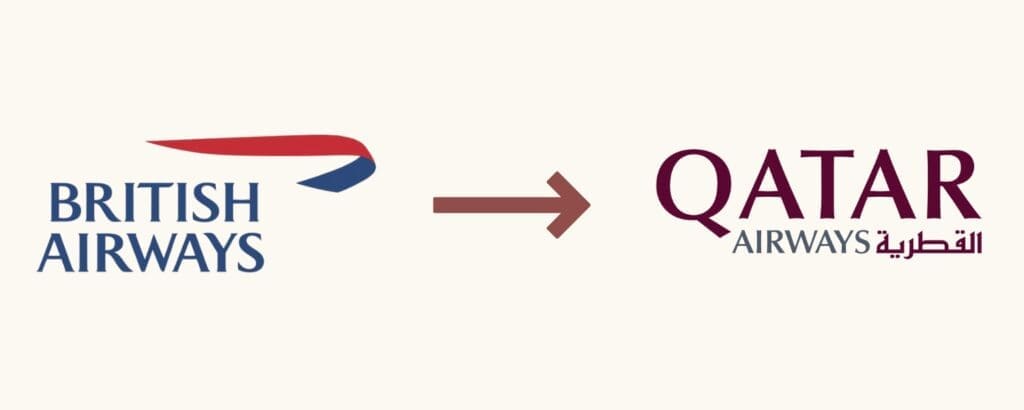Accessing Premium Airlines Through Alternative Points Programs

Strategic utilization of airline partnerships represents one of the most overlooked opportunities in travel optimization. Through this approach, I’ve experienced Singapore Airlines, EVA Air, ANA, Qatar Airways, and Cathay Pacific business class services without earning points directly from any of these carriers.
Recent redemptions include Qatar Airways Q-Suites booked with JetBlue points, ANA’s renowned A380 Flying Honu business class accessed through Avianca LifeMiles, and multiple premium experiences using British Airways Avios—despite never flying British Airways on their own aircraft.
The fundamental insight: you don’t need to fly the airline whose points you’re using. In fact, focusing on “budget” airline points can unlock access to premium carriers at superior rates and availability compared to booking directly through those premium programs.
Disclosure: This analysis is based on personal experience and current partnership structures, which can change.
The Strategic Mindset Shift

Traditional thinking suggests earning points from airlines you prefer to fly. This approach fundamentally misunderstands how modern airline partnerships create arbitrage opportunities.
Consider the value proposition: Would you prefer JetBlue points or Qatar Airways points? Obviously Qatar Airways. However, JetBlue points often provide better access to Qatar Airways flights than Qatar’s own program, frequently with superior availability and more favorable redemption rates.
Similarly, Avianca LifeMiles consistently outperform ANA’s own program for booking ANA flights. My 46,000 Avianca LifeMiles secured an eight-hour lie-flat business class experience on ANA’s A380 from Honolulu to Tokyo, including lounge access and direct boarding to the upper deck. This represents exceptional value compared to what 46,000 Avianca points would secure on Avianca’s own flights.
This strategy succeeds because airlines form partnerships to expand destination coverage beyond their own networks. The result creates opportunities to access premium experiences through “lesser” programs that offer better terms than direct booking.
Understanding Alliance Architecture

Star Alliance: Maximum Global Coverage
Star Alliance encompasses 25 member airlines with over 17,500 daily departures to 1,150+ destinations across 189 countries. This extensive network creates numerous redemption opportunities.
Air Canada Aeroplan serves as my primary Star Alliance strategy, providing access to Singapore Airlines, EVA Air, ANA, Turkish Airlines, Lufthansa, and United Airlines. Recent EVA Air business class redemptions through Aeroplan delivered Taiwanese hospitality standards using Canadian airline points.
Oneworld Alliance: Premium Product Access
British Airways Avios unlock Oneworld partners including Qatar Airways, Cathay Pacific, and Finnair. This partnership enables access to Qatar Airways’ award-winning Q-Suites through British Airways’ often more favorable redemption structure.
SkyTeam Alliance: European and Asian Focus
SkyTeam represents the third major alliance with 19 member airlines including Delta Air Lines, Air France-KLM, Korean Air, and China Eastern. While I utilize this alliance less frequently for premium redemptions, it provides valuable access to European and Asian carriers, particularly for routes where Star Alliance or Oneworld coverage is limited.
Strategic Partnerships Beyond Alliances
Independent partnerships create unique opportunities outside major alliances. JetBlue’s relationship with Etihad Airways exemplifies this, allowing JetBlue points to access Etihad’s premium business class despite JetBlue’s budget carrier status.
These partnerships share award space across systems, creating master key access to multiple premium experiences through strategic point accumulation.
Value Comparison Analysis
Case Study 1: Avianca → ANA Business Class

Investment: 46,000 Avianca LifeMiles + $50 fees
Experience: ANA A380 business class Honolulu-Tokyo
Cash Equivalent: $5,000+
Service Level: Hawaiian lounge access, upper deck boarding, lie-flat seats, premium amenities
Comparison: Equivalent ANA direct redemptions require significantly more miles with limited availability, while Avianca’s own business class offers domestic-style 2×2 seating without lie-flat capability.
Case Study 2: JetBlue → Qatar Airways Business Class

Investment: 88,000 JetBlue points (acquired for $1,354 during 100% bonus)
Experience: Two Qatar Airways Q-Suites Doha-Vienna
Cash Equivalent: $7,000+ for both passengers
Service Level: World’s top-rated business class product with full amenities
JetBlue lacks comparable long-haul business class product, making this redemption impossible through direct JetBlue flights.
Case Study 3: British Airways → Qatar Airways Long-Haul

Route: Africa-Doha-Montreal via Qatar Airways
Benefits: Qatar’s premium service accessed through British Airways’ favorable redemption rates and superior availability
Implementation Strategy

Partnership Research Requirements
Success requires comprehensive understanding of airline relationships and alliance structures. Star Alliance members provide access to premium Asian carriers, while Oneworld partnerships unlock Middle Eastern and European premium products.
Award Search Methodology
Effective searching requires specialized tools designed for award availability across multiple programs. Focus on alliance-wide searches rather than single-carrier availability.
Key considerations:
- Flexibility: Essential for dates and destinations
- Long-haul focus: International routes provide optimal value
- Timing windows: Best availability typically appears within 14 days or 350+ days from departure
Advanced Optimization Techniques
Alliance Coverage Prioritization: Star Alliance offers the most comprehensive global coverage and availability options, making it the primary target for partnership redemptions.
Sweet Spot Identification: Monitor lesser-known opportunities like JetBlue-JAL partnerships for Vancouver-Tokyo business class, previously available for 59,000 points one-way.
Partnership Evolution Tracking: Relationships change regularly. Airlines modify alliances and specific partnerships, requiring continuous monitoring for emerging opportunities.
Strategic Timing Considerations

Availability Windows
Optimal award space typically appears:
- Last-minute: Within 14 days of departure
- Far-future: 350+ days advance booking
- Seasonal variations: Route-specific patterns based on demand
Dynamic Market Response
Premium redemptions are becoming increasingly scarce and expensive across all programs. However, partnerships often lag behind direct program changes, creating temporary arbitrage opportunities that strategic practitioners can exploit.
Partnership Arbitrage Examples
United Airlines bookings through Aeroplan previously offered fixed pricing advantages over United’s own dynamic system. While this specific opportunity has evolved, similar patterns emerge regularly across different partnership combinations.
Risk Assessment and Limitations

Partnership Stability
Airline relationships can change without notice. Alliances expand and contract, while specific partnerships may be modified or terminated. Current opportunities may not persist indefinitely.
Complexity Requirements
This strategy demands:
- Research capabilities: Understanding complex partnership structures
- Flexibility: Adaptable travel plans and destinations
- Timing skills: Acting decisively when opportunities appear
- Technical knowledge: Navigating multiple booking systems
Geographic Optimization
Partnership strategies excel for long-haul international travel where premium service differentials are most pronounced. Domestic or short-haul routes typically favour direct carrier programs.
Strategic Implementation Framework

Program Selection Philosophy
Focus on earning points within systems that provide maximum partnership access rather than chasing individual welcome bonuses. Consider alliance coverage and specific high-value partnerships when building point portfolios.
Research-First Approach
Identify target premium experiences first, then work backward to determine optimal point earning strategies. This prevents accumulation of points without clear redemption paths.
Execution Timing
When exceptional partnership opportunities appear, act immediately. Award availability can disappear quickly, and program changes may eliminate current sweet spots without warning.
Future Outlook and Evolution

Partnership opportunities continue evolving as airlines adjust alliance relationships and modify award programs. While some traditional sweet spots disappear, new partnerships create fresh opportunities for strategic practitioners.
The key lies in understanding that airlines offering basic service often provide the best access to premium partner experiences through their alliance relationships and specific partnerships.
This approach represents advanced travel optimization requiring significant research and flexibility. However, for practitioners who master these systems, the results provide access to world-class premium travel experiences that would otherwise remain financially impractical.
Success depends on treating partnership utilization as a strategic discipline rather than casual travel planning, focusing on alliance structures and partnership opportunities rather than individual carrier preferences.
Follow me on Instagram and Tiktok for travel tips hacks that’ll make your adventures unforgettable!
@thecanadianjetsetter on INSTAGRAM →
@thecanadianjetsetter on TIKTOK →
follow me ON Instagram →
FOLLOW me on tiktok →
Comments will load here
Be the first to comment